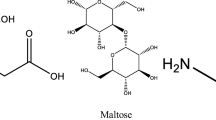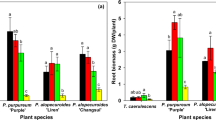Abstract.
Cu binding to root exudates of two cultivated plants, wheat (Triticum aestivum) and rape (Brassica napus), and two weeds associated with wheat, dog daisy (Matricaria inodora) and cornflower (Centaurea cyanus), was studied in vitro under hydroponic and sterile conditions. Nutrient solutions were prepared with or without P. A MetPLATE microbiological test was used to assess the metal complexing capacity of root exudates. In the P-deficient solutions, no exudation was observed for any of the four plants; consequently, no Cu binding occurred. When P was present in the nutrient solutions, the plant exudates displayed differing abilities to complex Cu. No difference was detected in the binding capacity of the dog daisy or cornflower, and the blank [heavy metal binding capacity (HMBC)=1.07, 1.40 and 1.00, respectively]; however, the rape and wheat exudates were found to complex Cu in rhizospheric solutions (HMBC=1.73 and 3.00, respectively). The concentrations of exuded organic C were 1.2, 10.8, 15.3 and 15.7 mg l–1 for the dog daisy, cornflower, wheat and rape, respectively. These results suggest that the nature, as well as the amount, of the organic compounds exuded by plant root, is important in determining the extent of Cu complexation.
Similar content being viewed by others
Author information
Authors and Affiliations
Additional information
Electronic Publication
Rights and permissions
About this article
Cite this article
Dousset, S., Morel, J., Jacobson, A. et al. Copper binding capacity of root exudates of cultivated plants and associated weeds. Biol Fertil Soils 34, 230–234 (2001). https://doi.org/10.1007/s003740100404
Received:
Issue Date:
DOI: https://doi.org/10.1007/s003740100404




